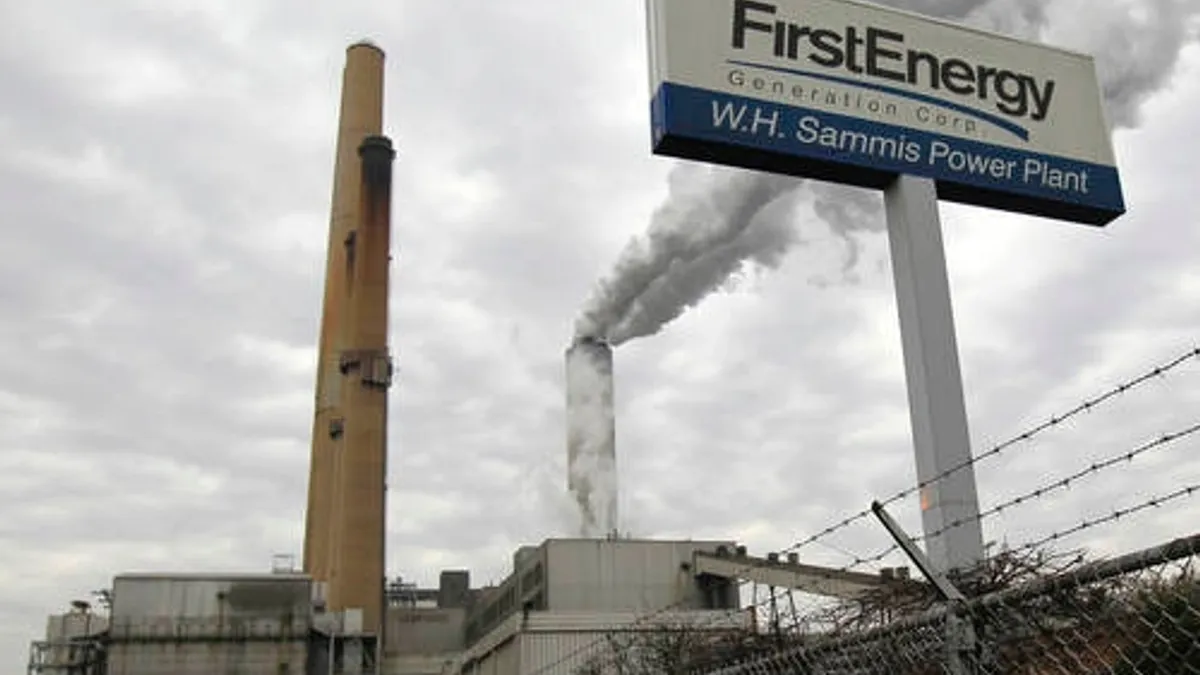Dive Brief:
- FirstEnergy Solutions announced Wednesday that it has reached an agreement with key creditors that could allow the company to negotiate its Chapter 11 bankruptcy proceeding and emerge on the other side with "continued ownership and operation of its retail and wholesale load-serving business."
- The Restructuring Support Agreement will form the basis of a reorganization plan that will be submitted to the U.S. Bankruptcy Court for the Northern District of Ohio.
- FirstEnergy Corp.'s competitive generation subsidiary filed for bankruptcy protection in March 2018, as its coal and nuclear plants struggled to compete and were marked for shutdown. The closures are still on track, absent "sufficient legislative support and meaningful market reforms," the company said.
Dive Insight:
FirstEnergy may have crafted a way out of bankruptcy, but company officials made clear in the announcement that it still intends to shut down several failing power plants.
The company said the bankruptcy proposal allows it to continue operating its nuclear and fossil fuel-based generation until their previously announced deactivation dates, though it also allowed for the possibility of running the units for an extended period "if the company obtains sufficient legislative support and meaningful market reforms."
FirstEnergy in 2018 announced it would be closing its 900-MW Davis-Besse nuclear plant in Ohio, as well as four plants in Pennsylvania and Ohio with a combined 4 GW of coal capacity. The company has fought for market and policy changes to help keep them open, and even requested the U.S. Department of Energy to issue an emergency order to provide cost recovery to coal and nuclear plants in the PJM Interconnection market.
Coal and nuclear plants have struggled to compete against cheap gas-fired power in competitive markets, and the issue stretches well beyond FirstEnergy's struggles. Less than two years ago, Mauricio Gutierrez, the president and CEO of NRG Energy, declared the the independent power producer model "now obsolete and unable to create value over the long term."
FES remains optimistic about the chances for legislative or policy support, as it would "solidify the tax base and tremendous economic value these plants provide to the surrounding communities in Ohio and Pennsylvania," FES President Donald Schneider said in a statement.
Along with FirstEnergy, the agreement includes the official committee of unsecured creditors and several creditor groups, including a group holding claims against FES and FirstEnergy Nuclear Operating.
The agreement calls for FES to file the reorganization plan and disclosure statement by Feb. 8, 2019. The initial milestone for the effective date of the plan of reorganization is Sept. 15, 2019, though FES said it will automatically extend until Oct. 31, 2019, "in the event that the only remaining conditions precedent to the Plan Effective Date are regulatory approvals."















